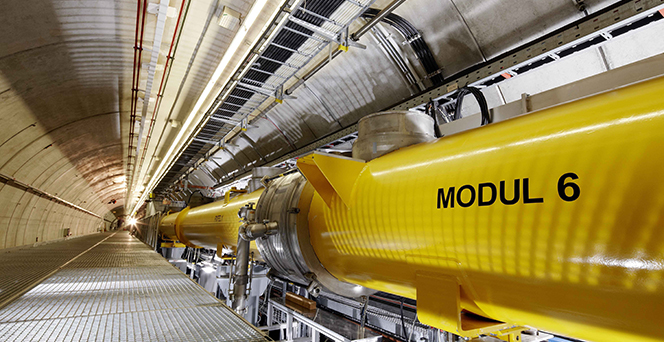
A photo of a section of the FLASH linear accelerator. Photo: DESY
FLASH set impressive records: first, the machine managed a wavelength of 13 nanometres, later even achieving 6.5 nanometres. With the shorter wavelengths, scientists could probe very fine details of samples.
Every individual flash from FLASH contains up to five gigawatts of power – around a thousand times more as comparable lasers. The strong pulses make very fast measurements possible – an important prerequisite for investigating biological samples.
FLASH even made it into the Guinness Book of World Records: here, the world's fastest movie was recorded!
